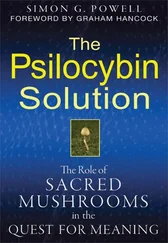“I’m not sure I understand.”
Kreitzmann explained, “I first showed you the most recent addition to our body of work, the telepathy lab. I thought I would bring you here to give you a sense of the path we’ve traveled thus far. This was our first field of study. I actually began this study at Johns Hopkins, using volunteer students. The concept is quite basic, really. We’ve all heard those few talented people who can speak at what to us seems an incredible rate of speed. Yet, with recording and playback analysis, their individual word pronunciations are very good. Surprisingly so, actually.
“As the beginning concepts of exemplarium behavior modeling began to take shape in my mind, it seemed a natural to see what we could do in this area.”
“You teach people to talk faster?”
“Simply put, yes. Not only do they talk faster, but they are able to understand the spoken word at a greatly advanced rate. I started with the volunteer students who came to my lab for two hours a day, five days a week. In the lab, we exposed them to computer-modified speech that had been accelerated, as well as to those rare rapid speakers. It was a very primitive protocol compared to our techniques today — periods of what I considered at the time to be immersion, followed by tests to determine our success rate.”
“How well did it work?”
“Quite well, considering. Over the period of a semester, we were able to speed up their rate of speech an average of twenty-two percent. And that was inclusive of both modes of speech: normal, conversational speech and speech in which the subject was instructed to talk as rapidly as he or she could — what I called verbal sprints.”
“Excellent results!”
Kreitzmann shrugged off Elias’ compliment. “What that first experiment actually taught me was the importance of true immersion.”
“True immersion?”
“As I said, we only had the subjects for two hours a day, five days a week. We were able to measure the gains we made in the time period of a single session, and then measure the same subjects again upon their return for the next session. After exposure to the barrage of so-called normal speech in their classrooms, lecture halls, dorms, et cetera, we would lose nearly all of the gain we had experienced. It was almost as if we were starting over every day. And on Mondays, our frustration level was even higher.”
“Well, that is the reality of behavioral work on campus.”
“I know, believe me. But I kept wondering what we could accomplish without those limitations.”
“Having subjects you control all the time?”
“Exactly.”
Elias watched the man as he spoke and was amazed at the indifference he displayed for what he was saying. There was not a moment when he appeared to grapple with the thorny ethical implications of his words, not even a perfunctory lip service excusing it. He might as well have been relating a lab experiment with fruit flies, rather than human beings.
“I decided that as long as I was doing my work on campus, there would be no real opportunity to move closer to my goals. I waited patiently until I was away from the academic environment and had secured my first private funding. It was then that we saw, for the first time, the true potential of the technique; and that was by utilizing only adults as subjects, those who had progressed far beyond the critical formative years. We have now reached a point where we are probably very near the structural limits of the vocal components. Would you like a demonstration?”
“Of course.”
Kreitzmann nodded at Boehn, who turned away to sit at a monitor. With a few key strokes, he opened a video file which displayed a still-frame close-up of a woman’s face. She was in her mid-forties and Asian. Elias guessed that she was Vietnamese. With another tap on the keyboard, the speakers came to life and the woman’s face animated. To Elias’ eyes, the region below her nose was a blur, almost as if he were watching a news commentator recorded earlier and now being played back at thirty times the normal speed. The sound coming from the speakers could only be described as a tonal torrent. On the right side of the monitor, a column of text scrolled past at a rate too fast for Elias to read.
“Am I seeing this at normal speed?”
Boehn cleared his throat. “Yes, Doctor Brightman, you are. The playback you are observing has not been accelerated in the least.”
“But, other than the frequent pauses for a breath, it doesn’t resemble speech. I can’t seem to distinguish any variations in inflection or enunciation.”
“We can’t. Without the benefit of immersion, our brains are not prepared to process what we hear from this subject or the others who have attained her level of skill.”
“Patrick, it is very much like the two discreet segments of the brain which are assigned the distinct tasks of object recognition and motion detection,” Kreitzmann explained. “These two segments are competing for the attention of the conscious mind. This is an observable phenomenon in our everyday lives. If you lie on your back and watch a ceiling fan which is not yet moving, you can see the individual blades. As the rotation of the ceiling fan blades begins and is slowly increased, you are still able to discern the individual blades. But at some point, and this varies greatly from person to person, depending on experience and orientation, the segment of the brain which observes motion takes over and the blades become a blur. The individual blades are still visible to you, but the skill to separate them from their motion is not developed.”
Elias thought about the blur he had witnessed during his altercation in ZooCity, but decided against broaching the subject.
“Watch what happens as Doctor Boehn digitally slows the tempo. Let us know as soon as you can understand what the subject is saying.”
Boehn typed a command on the keyboard as Elias watched the monitor. The change was, at first, subtle. But within seconds he was able to tell that she was speaking words, even though he was not yet able to distinguish them. After a few more seconds passed, the words became understandable to him.
“Now.”
With a nod from Kreitzmann, Boehn typed a command which stopped the deceleration of the speech.
“Doctor Boehn, please tell Patrick the level we’ve reached.”
With another few taps on the keys, a small white box, filled with numbers, appeared at the lower right-hand corner of the monitor.
“Seventeen percent.”
Instead of explaining, Kreitzmann smiled at Elias, waiting for the fellow scientist to figure it out on his own.
“Seventeen percent? The point where I was able to understand her speech was at seventeen percent of her recorded rate?”
Kreitzmann only nodded to indicate that Elias was correct.
“That means that she was speaking at more than five times the normal rate?”
“It depends on how you define normal. Remember, all of these things are truly relative. We have had other subjects who have not been immersed in the speech enhancement protocol but who were able to understand her at twenty-three percent. Some required slowing to as low as eleven percent. But, yes, she speaks at approximately five times the average human rate.”
“Rudy, I hate to ask this, but what’s the point of having individuals speak that quickly if they can’t be understood?”
“But they can. Their speech is perfectly understandable to others who have gone through the immersion protocol. They are able to converse with each other easily at that rate. You see, Patrick, not only can we enhance the ability to speak at a rapid rate, but merely by exposure from, essentially, birth, the brains of the subjects are also able to hear, distinguish, and understand at that rate, as well.”
Читать дальше












